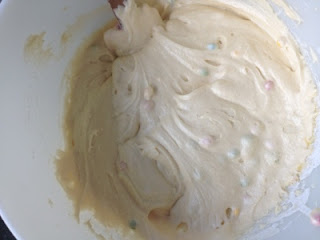Herbert George Wells was born on 21st September 1866 in the then small market
town of Bromley in Kent. His father, Joseph Wells owned a small business in the town
centre selling china ware and cricket bats. He was formerly a professional gardener
and county cricketer, who was renowned for his fast paced bowling. But those days
of leather against willow were cut short after he broke his leg. The house from where
he ran his business was known as Atlas House, and the hub for family life was the
cramped kitchen basement underneath the shop itself.
Young Herbert was already showing great academic promise, but by the age of
thirteen his family had broken up, forcing him to go out and earn his own living. By
now his father was bankrupt and his mother had gone off to become resident
housekeeper at Uppark.A Sussex country house where she had been formally
employed as a lady's maid before her marriage to Joseph.
Herbert was taken out of school to follow his two older brothers into the drapery
trade. After being briefly employed as a pupil-teacher and a pharmacist's assistant, in
1881 he was given an apprenticeship to a large department store in Southsea,
Hampshire. This was not a happy period in his life and he used the experiences in two
future novels of his Kipps (1905) and The History of Mr Polly (1910).
1883, Wells obtained a teaching assistant post at Midhurst Grammar School,Sussex
. It soon became apparent that H.G.Wells was a born teacher, as many of his books
would show. He was taught biology and zoology by T.H.Huxley, a friend and supporter
of Charles Darwin and one of the Victorian era's most influential scientific thinkers.
In 1891 he married his cousin Isabel Wells,but it wasn't to last as they had very little
and common and Wells fell in love with one of his students Amy Catherine Robbins.
They started living together in 1893, and married two years later when his divorce
came through.
It was during his years as a biology teacher, that Herbert began to make his way into
becoming a writer and a journalist. His first book was Textbook of Biology (1893). Ill
health finally forced Herbert to retire from the teaching profession. By luck he was in
high demand for writing short stories and humorous essays for the newspapers and
magazines of the time.
From his student days, Herbert had been working on and off on a story about time
travel and a possible future for the human race. After many redrafts and a lot of
support from poet and editor W.E.Henley, The Time Machine (1895) was written
and the success was instantaneous. While it was running as a magazine serial,
Wells was being called a 'man of genius'. Now there was a ready market for his
works of fiction: five novels were written between 1896-1901 including The
Invisible man. The War of the Worlds and The First Men in the Moon.
As the twentieth century began, Herbert George Wells was an established author
both here and in America. His books were even being translated into Russian, French,
German and Spanish and several other European languages.By now he had over taken
French author Jules Verne in the popularity stakes. But Wells wanted to be more than
just boys' adventure novelist, and Love and Mr Lewisham (1900) was his first stab at
realistic fiction, although with comic inclinations it reflected his own experiences as a
student and as a teacher.
Wells was a prophetic writer with a social and political message throughout his works.
His success as an author brought about great changes in his life, and ill health had forced
him to leave London in exchange for the Kent coast in 1898. He had a house built
overlooking the English channel at Sandgate.
Ann Veronica (1909) was a prime example of controversial yet topical fiction, covering
such issues as women's rights, sexual equality and contemporary morals.
The Outline of History (1920) and A Short History of the World (1922) were written
to draw attention to the lessons to be learned from the First World War. Wells saw history
as a 'race between education and catastrophe'.
The same concerns led to his future history novel The Shape of Things to Come (1933)
which contained dire warnings about the inevitable outbreak and consequences of the
Second World War.
He worked for a brief spell for the Ministry of Propaganda in 1918, producing a memo
on the aims of war that would anticipate the setting up of the League of Nations.
In 1922 and 1923 he stood for Parliament as a Labour candidate. He sought to try to
influence world leaders including two American Presidents. He had two meetings in the
Kremlin with Lenin in 1920 and later with Josef Stalin in 1934. Both were publicized on a
global scale.
1933 saw him elected as President of International PEN, the writers organization
campaigning for intellectual freedom.It was the same year the Nazis publicly burnt his
books and he was banned from visiting Fascist Italy.
H.G.Wells became convinced that nothing less than global unity would be needed if
humanity was not to destroy itself. In several of his books he outlined his theories of world
citizenship and a world government.
As the Second World War dawned, Wells felt that his warnings had gone unheeded
and his efforts for peace were nothing more than a failure.His last great campaign for
international support, was for Human rights.The proposal, set out in his Penguin special The
Rights of Man (1940) helped to bring about the United Nations declaration of 1948.His
last book Mind at the End of its Tether (1945) was a despairing bleak work in its prospects
for the future of mankind.
H.G.Wells died at Hanover Terrace on 13th August 1946. In total he had written some
150 books and pamphlets.

















































